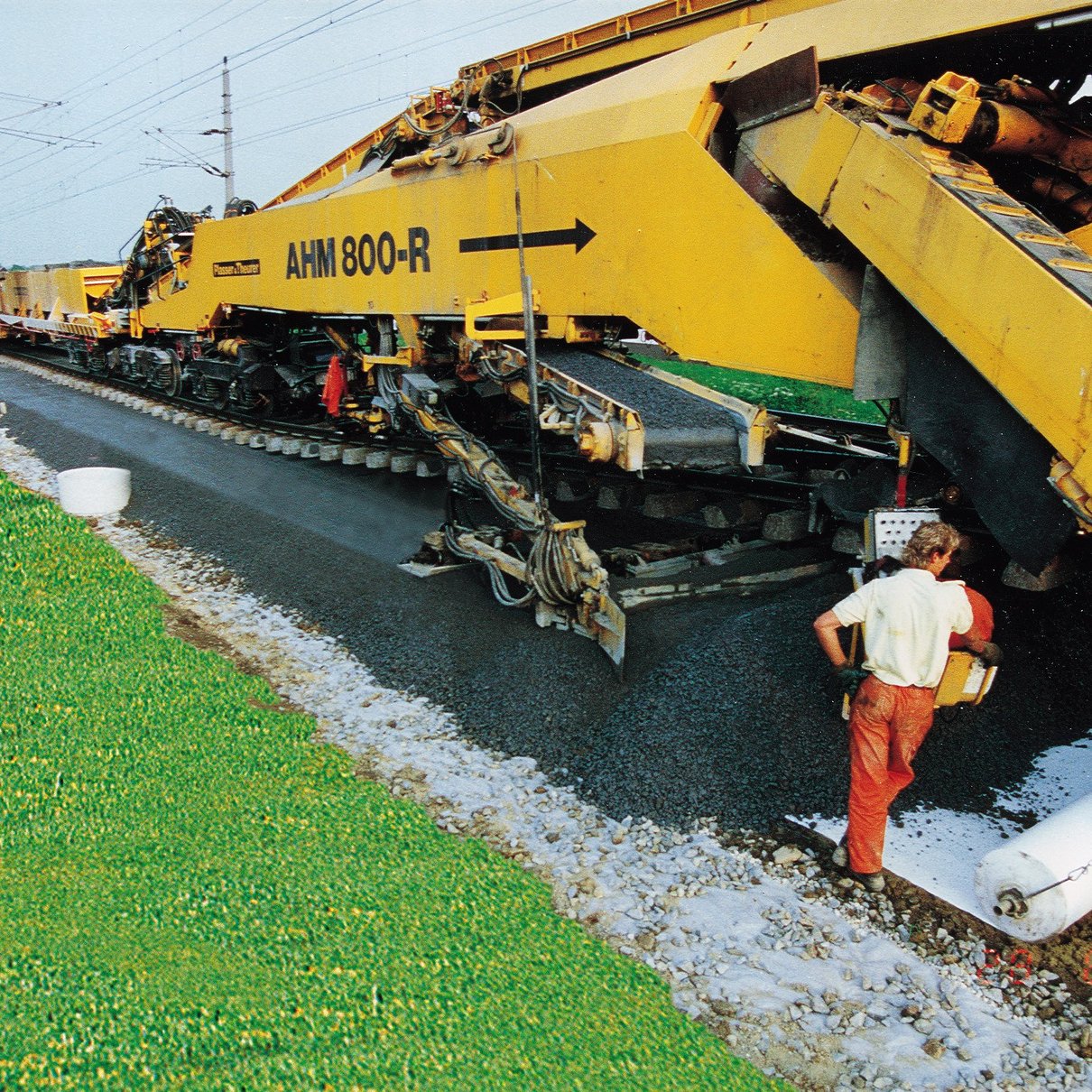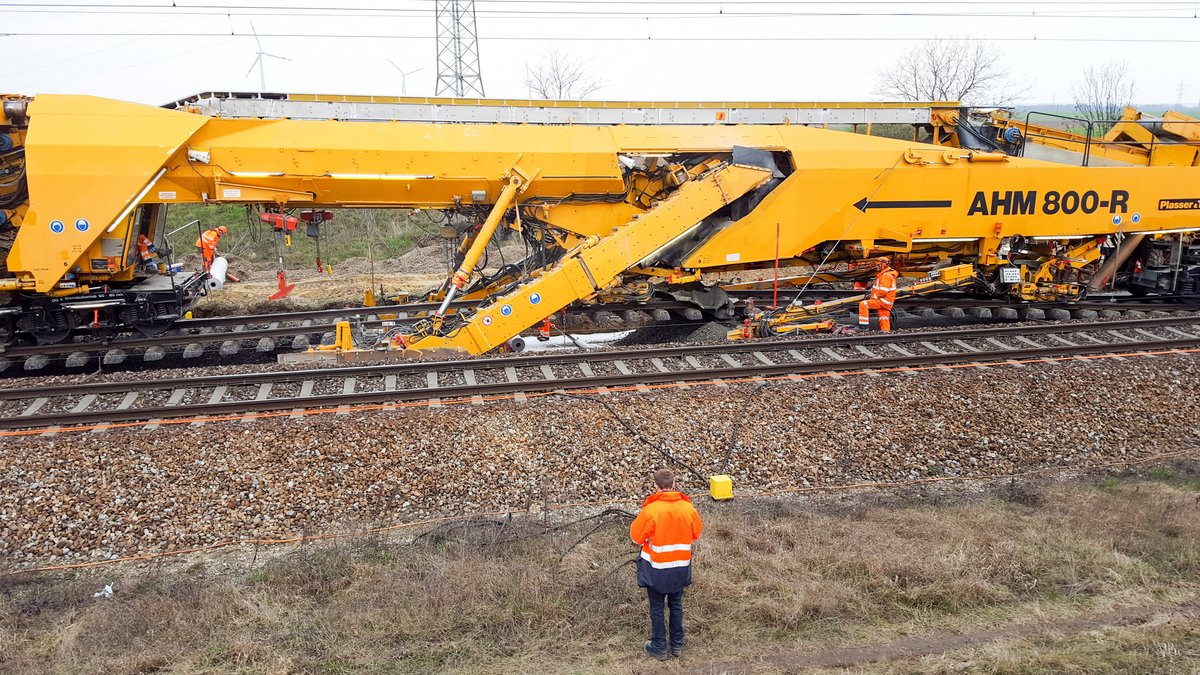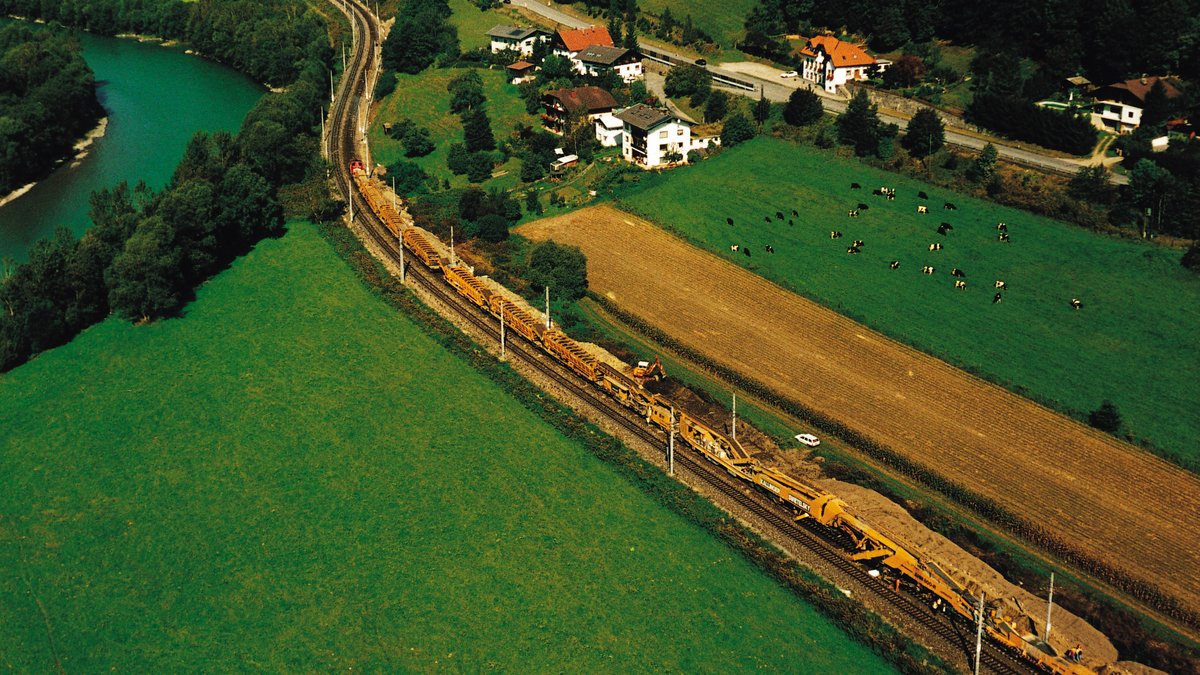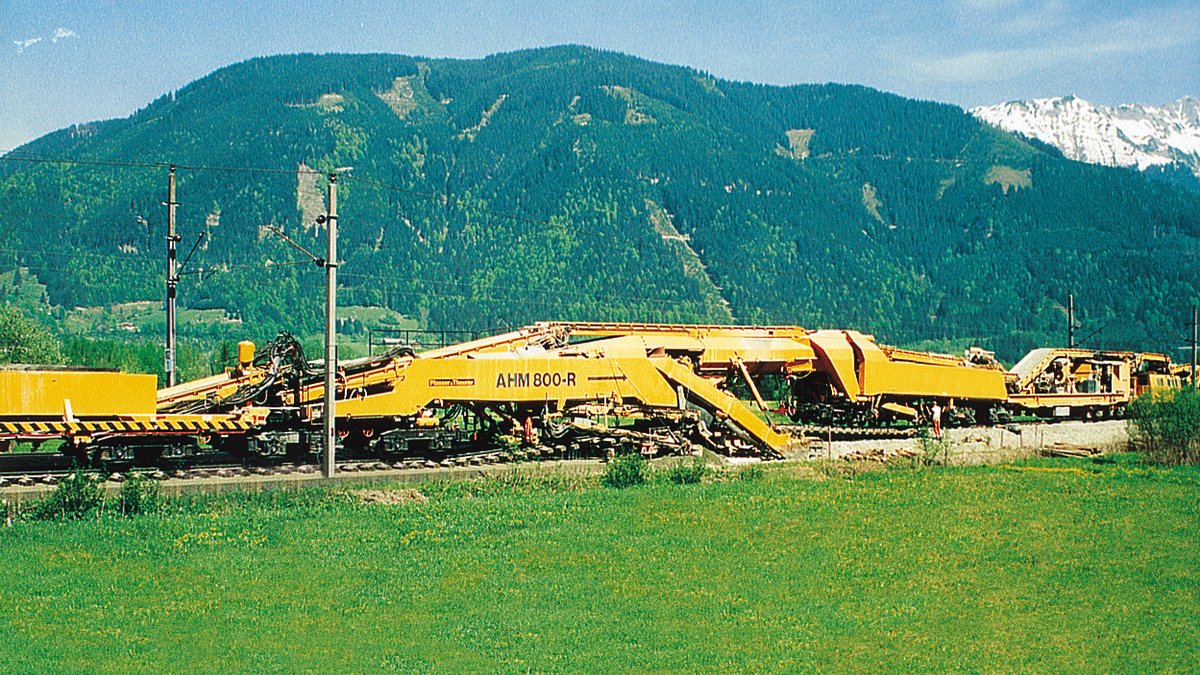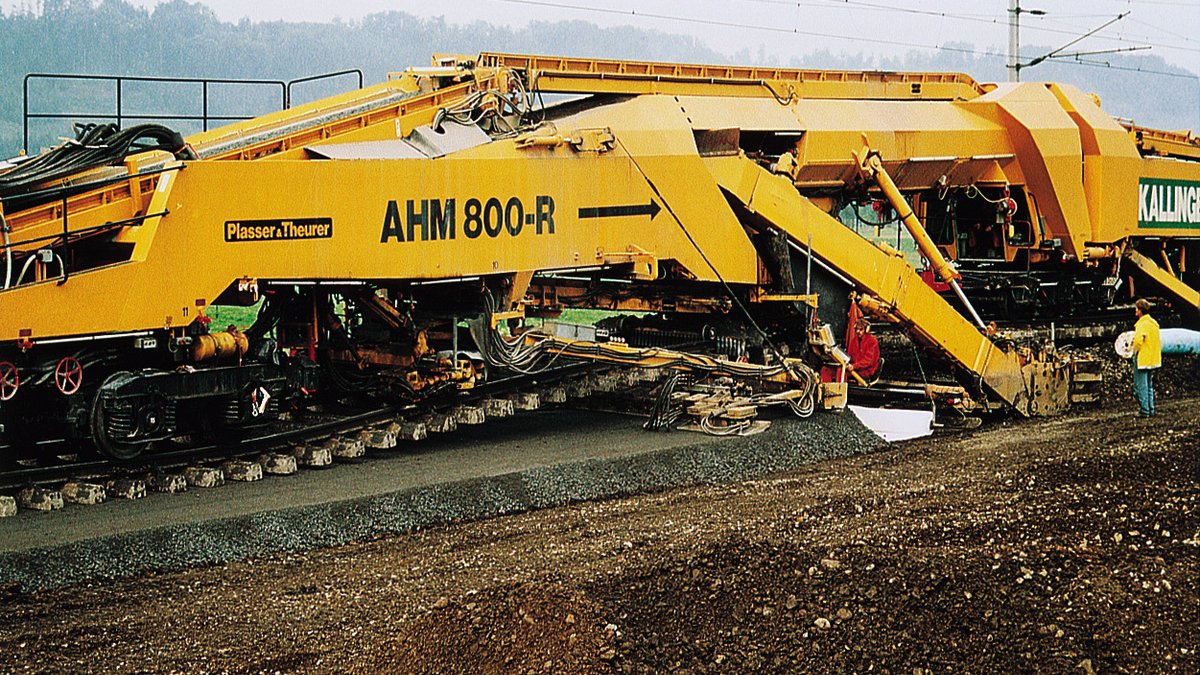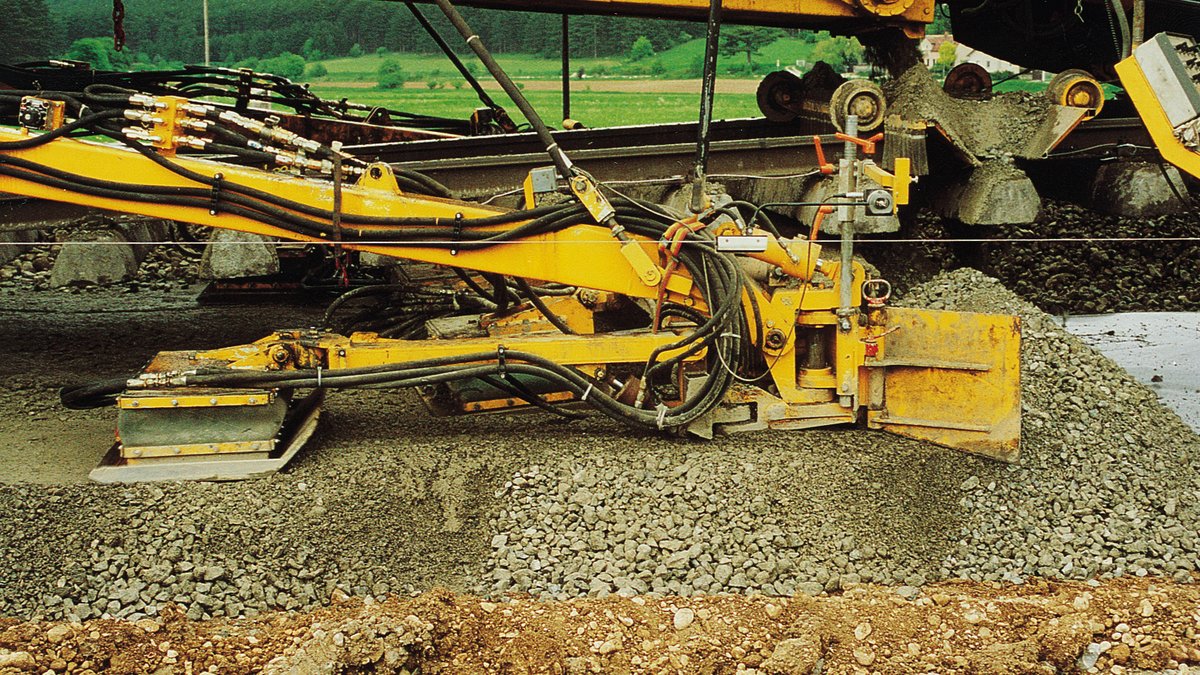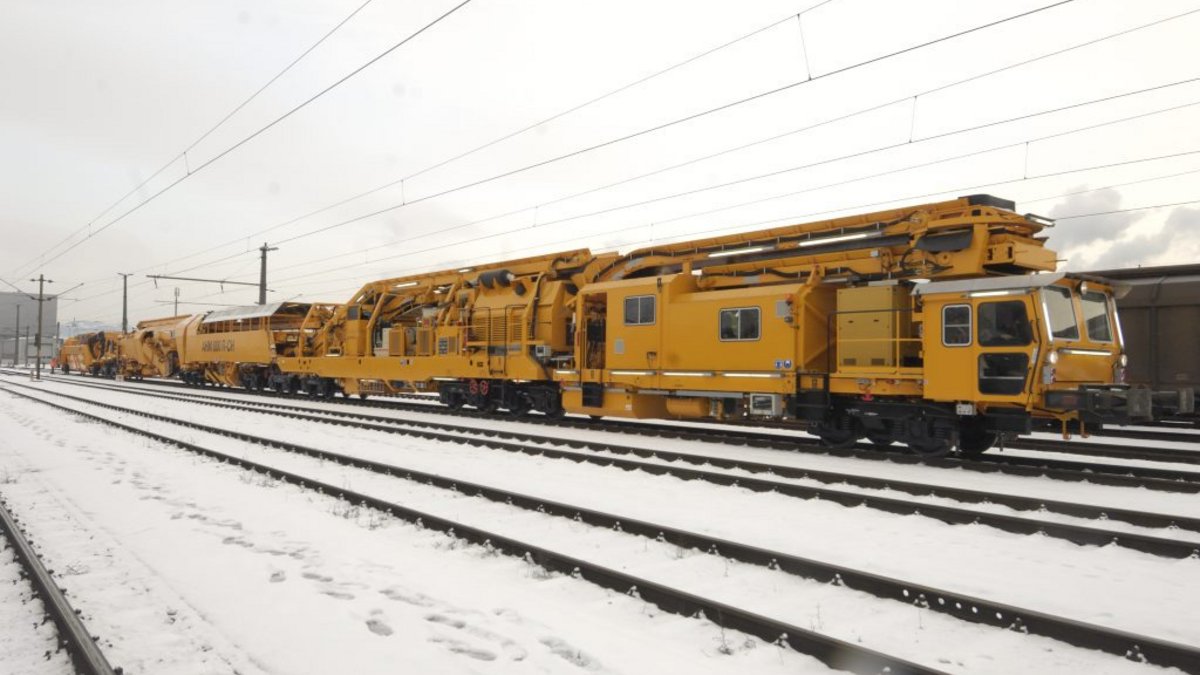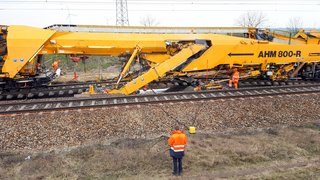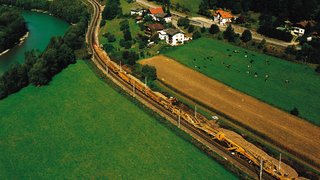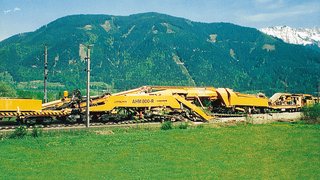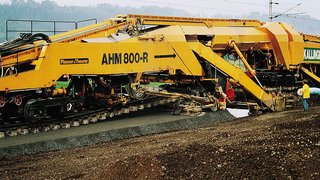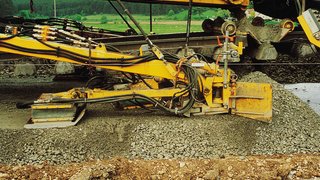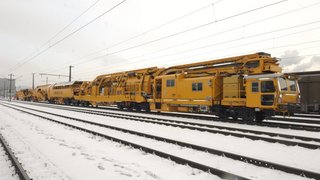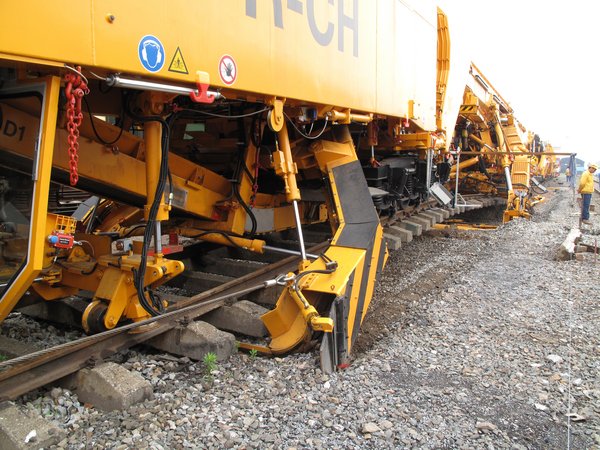- Infrastructure
- Conventional lines
- Heavy haul
- High speed
- Field of application
- Track
- Working mode
- Continuous action
Highlights
- Installation of a protective layer without removing the existing track.
- Recycling of the old ballast, reducing transport costs and saving of up to 50% new material,
- Option for simultaneous insertion of geotextiles in one operation
- Improved track geometry extends tamping intervals and saves maintenance costs.
The stability of the entire track and therefore the track geometry depends decisively on the load-bearing capacity of the formation protective layer and the subballast (FPL). Problems arising in the foundation of the track increase the expenditure for track maintenance and shorten the service life of the track material. Enormous additional costs are the consequence.
Poor drainage of water, an outdated layer structure or local features in the composition of the subsoil materials can reduce the load-bearing capacity of the subsoil decisively. Consequently, this reduces the stability of the entire track system and costs rise for maintenance of the sections of track concerned. At the same time damage occurs in thetrack materials.
Innovative machine systems allow the rehabilitation of tract sections with substructure problems. These machines ride on the track and work in assembly-line mode to produce an optimum FPL. Using integrated ballast washing plants, crushing plants and mixers, large quantities of the old material can be reconditioned and used for the FPL, which saves considerable costs. Correct installation of geosynthetics helps to achieve an excellent initial quality of the track, thus substantially raising the quality reserve.
In 1994 Plasser introduced a mechanised method of formation rehabilitation using the existing ballast cleaning machines as a basis. At the beginning of the nineties the call for a powerful track machine for installation of a protective layer became louder. One of the main demands was the incorporation of a recycling process for the track ballast. The AHM800R is a formation rehabilitation machine for plain track with two excavating chains and integrated material recycling. The existing ballast is used for the production of a sand-gravel mixture. For this the first excavation chain picks up the top layer of ballast and transport it to the crushing plant. In combination with sand and water the material is re-used as FPL. New ballast is placed in a subsequent working pass.
The machine can reach a working output of 40 to 80 m/h, depending upon the thickness of the new protective layer
Technical data AHM800R
| Length | 335' 9" | |
| Weight | 831 000 | lb |
| Engine Power | 2 137 | HP |
| Travel Speed | 60 | mph |
